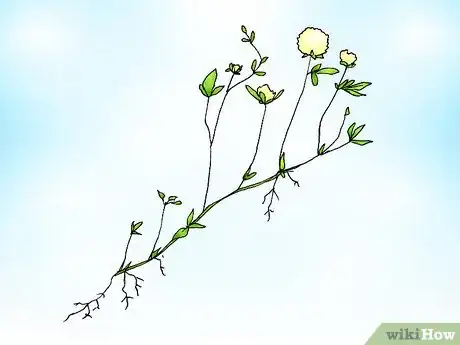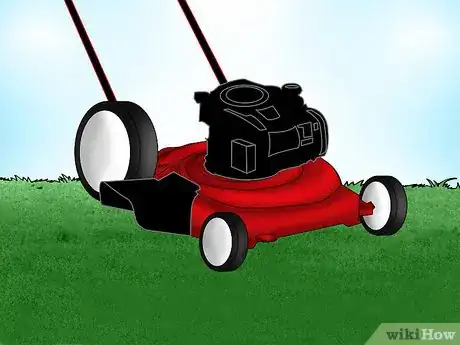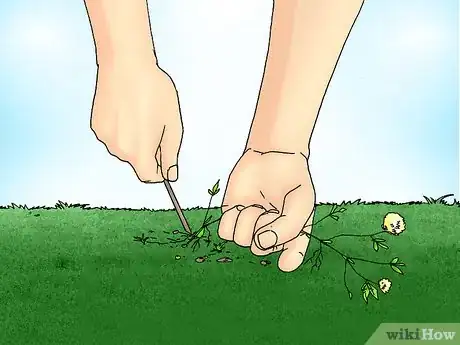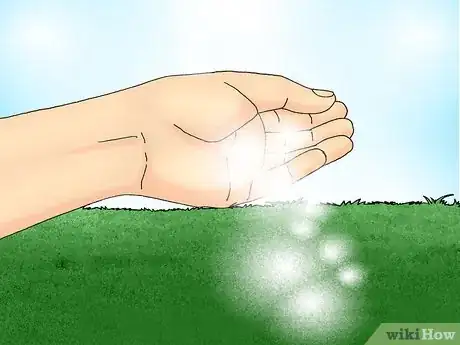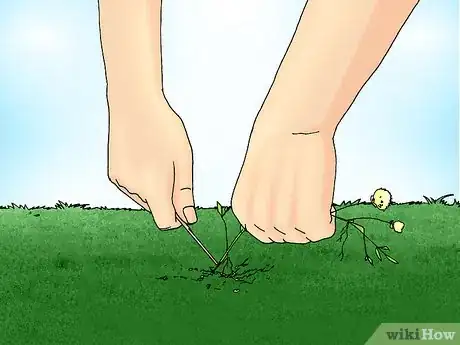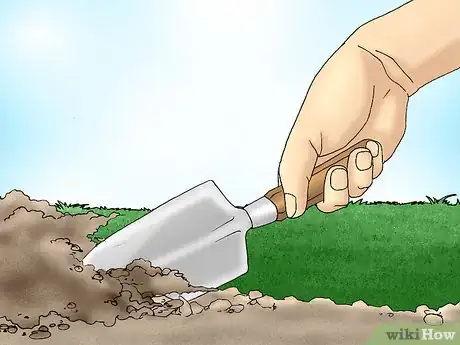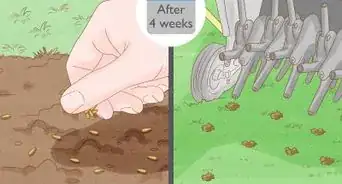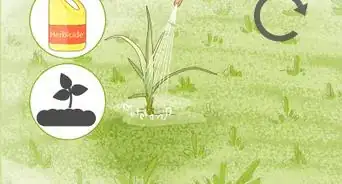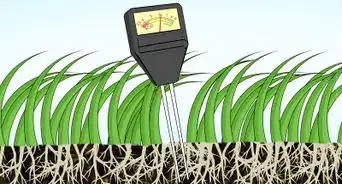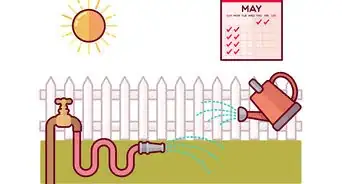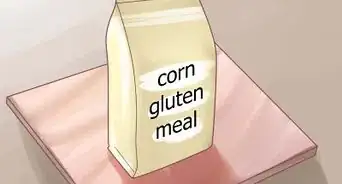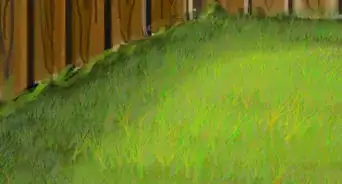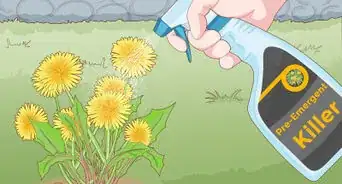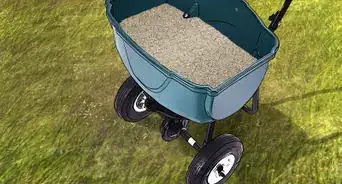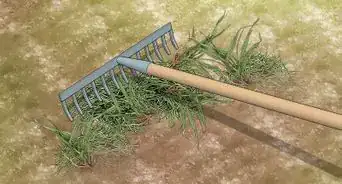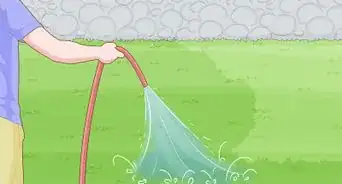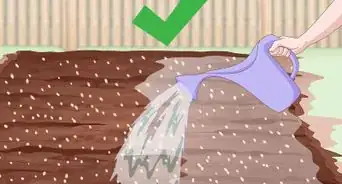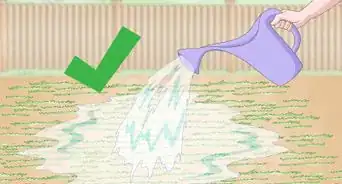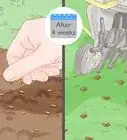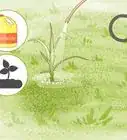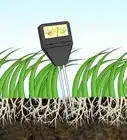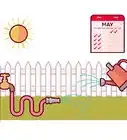This article was co-authored by Grant Wallace. Grant Wallace is a Landscaper and Owner of Grantlanta Lawn in Atlanta, Georgia. With over seven years of experience, he specializes in lawn maintenance and landscape installation. In 2012, he earned his BA from the University of West Georgia. Grant has been profiled in Shoutout Atlanta, Canvas Rebel, and Voyage ATL.
This article has been viewed 50,484 times.
White clover is known within gardening circles as both an enormous boon to the garden and a vicious weed. If you are wary of bees, because of allergies or young children, you will want to remove the plant from your lawn to direct the buzzing creatures elsewhere. While pulling the plant may seem like the best solution, it’s only step one in the overall removal procedure, since the seeds will likely remain behind. The seeds are very hardy and will survive several years, extreme temperature, and drought. However, there is hope, and you can combat the entire plant cycle of white clover with these steps.
Steps
-
1Understand why white clover grows to remove it properly. To understand how to remove clover, you must understand why it is there in the first place. Clover is a natural grass that at one time covered most of the open prairie North America.[1]
- Being an edible plant, the clover was encouraged to grow in open fields to provide food for livestock.
- It flourished in these areas, and subsequently spread as a weed to local lawns where it isn't as welcome.
- White clover is very bad at surviving in lush lawns, and performs badly in nutrient rich soil. If there is an existing plant that is flourishing, clover will very rarely edge that plant from it’s area.
- Clover prefers to fill in areas previously left bald by poorly maintained lawns and drought.
- The plant reproduces by small seeds that need to land on soil before sprouting, so heavy ground cover will prevent white clover from germinating.
-
2Avoid mowing your lawn to stop the spread of clover. Prior to pulling your clover, do not mow your lawn.[2]
- Mowing will disperse seeds and spread the plant across your lawn.
Advertisement -
3Remove the entire clover plant from the ground to prevent regrowth. In order to ensure that the clover does not grow back, remove the whole plant from the ground, including its root structure.[3]
- Applying weedkiller will only work if you intend to kill all the plants in the area.
- The only weed killer effective against clover is roundup, which will kill everything in the area once it is applied, including the plants that you want in your garden.
-
4Apply a nitrogen rich fertilizer. Once all the clovers are pulled from the area, apply a nitrogen rich fertilizer to your lawn.[4]
- This will slow the growth of clover and speed the growth of your lawn.
- Repeat this application process according to the fertilizer’s instructions.
-
5Ferret out new clover as soon as new plants form. You need to remove new plants before the seeds are produced, to prevent new growth from coming back.[5]
- If you notice any clover sprouting up, make sure to remove them quickly before they spread seeds and multiply.
- Because clover also spreads by creeping, you need to be diligent with removing new plants.
- Backing off for a month or two will let the plant spread across your yard again.
-
6Cover areas of removed clover with topsoil. Replace areas badly affected by clover with new topsoil and sod to speed the removal process.
- Clover can't grow well in areas where there is good coverage.
- If clover is in your garden beds, remove the plant and apply a thick layer of mulch or weed guard. This will prevent new seeds from falling on the soil and propagating.
Expert Q&A
Did you know you can get expert answers for this article?
Unlock expert answers by supporting wikiHow
-
QuestionWhat is a natural way to get rid of clover?
 Grant WallaceGrant Wallace is a Landscaper and Owner of Grantlanta Lawn in Atlanta, Georgia. With over seven years of experience, he specializes in lawn maintenance and landscape installation. In 2012, he earned his BA from the University of West Georgia. Grant has been profiled in Shoutout Atlanta, Canvas Rebel, and Voyage ATL.
Grant WallaceGrant Wallace is a Landscaper and Owner of Grantlanta Lawn in Atlanta, Georgia. With over seven years of experience, he specializes in lawn maintenance and landscape installation. In 2012, he earned his BA from the University of West Georgia. Grant has been profiled in Shoutout Atlanta, Canvas Rebel, and Voyage ATL.
Landscaper
-
QuestionWhat do I do if clover covers a very large part of my lawn? I can't pull all of those
 Stephen LecceseCommunity AnswerIf they've formed into patches, try covering them with a garbage bag to starve them of sunlight like in Method 1. For a chemical solution, use a broadleaf weed killer on your lawn, preferably one with 4-Dichlorophenoxyacetic acid.
Stephen LecceseCommunity AnswerIf they've formed into patches, try covering them with a garbage bag to starve them of sunlight like in Method 1. For a chemical solution, use a broadleaf weed killer on your lawn, preferably one with 4-Dichlorophenoxyacetic acid.
Expert Interview
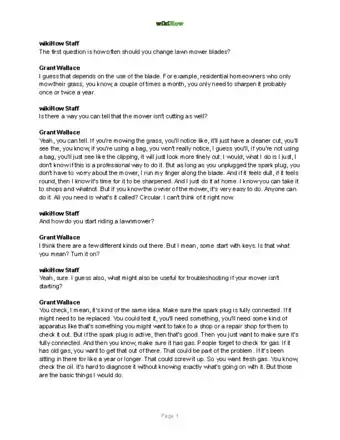
Thanks for reading our article! If you'd like to learn more about removing white clover, check out our in-depth interview with Grant Wallace.
References
- ↑ https://www.canr.msu.edu/news/white_clover_exploding_in_lawns
- ↑ https://www.thedailygardener.com/get-rid-of-clover-in-lawn
- ↑ https://www.thedailygardener.com/get-rid-of-clover-in-lawn
- ↑ https://www.totallandscapecare.com/how-to-landscape/removing-white-clovers-from-yard/
- ↑ https://www.totallandscapecare.com/how-to-landscape/removing-white-clovers-from-yard/
